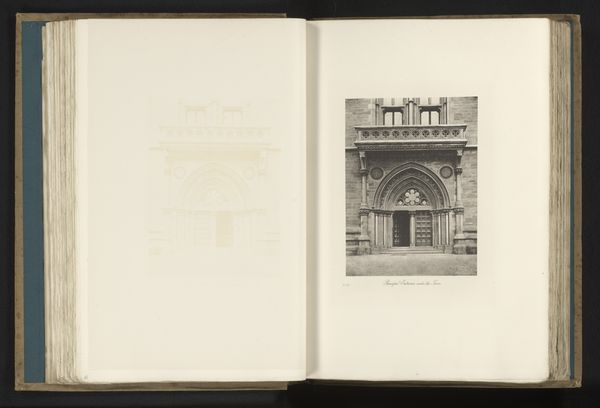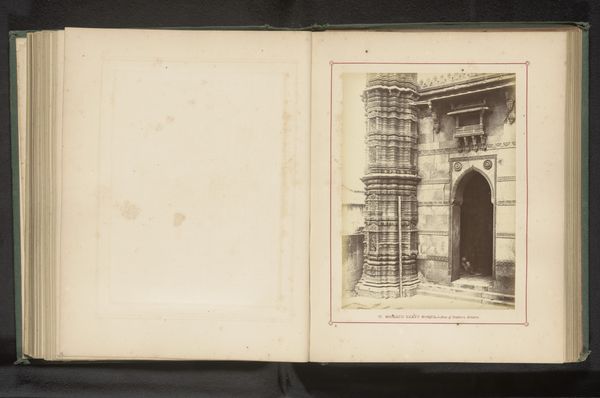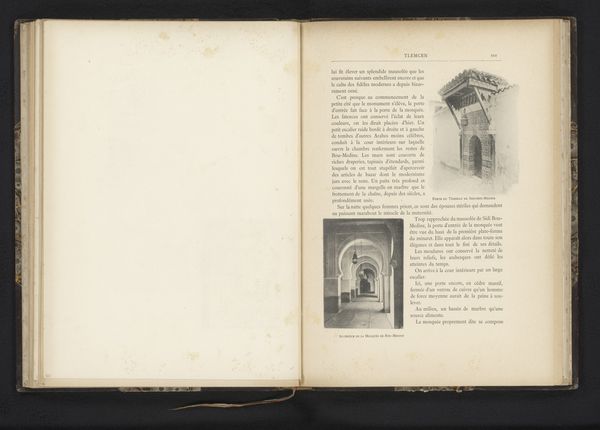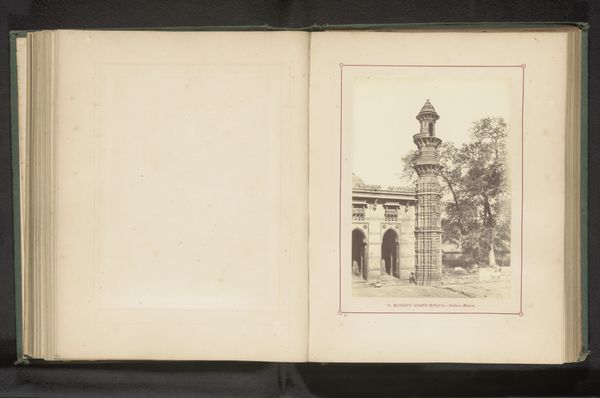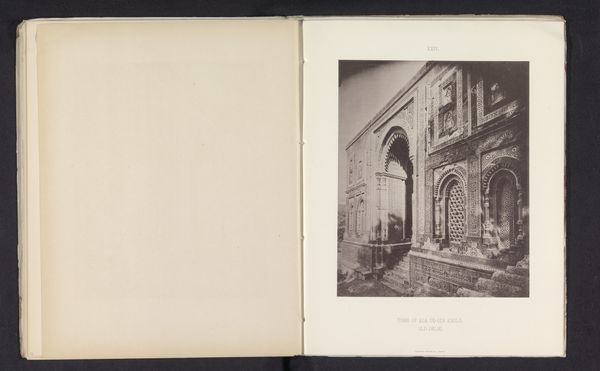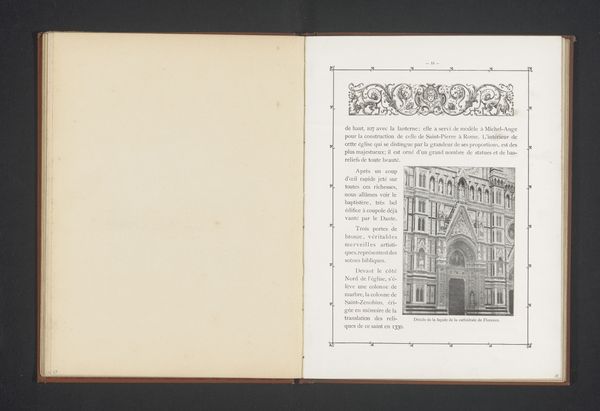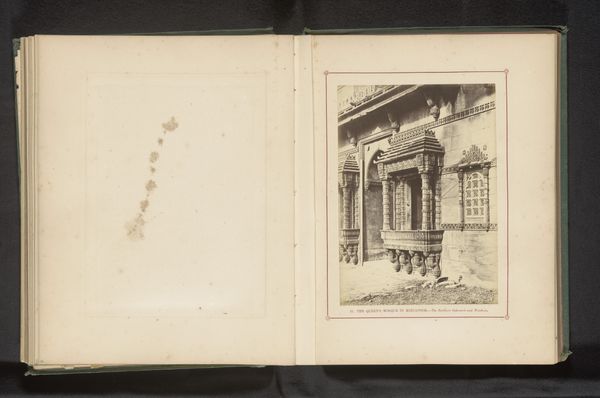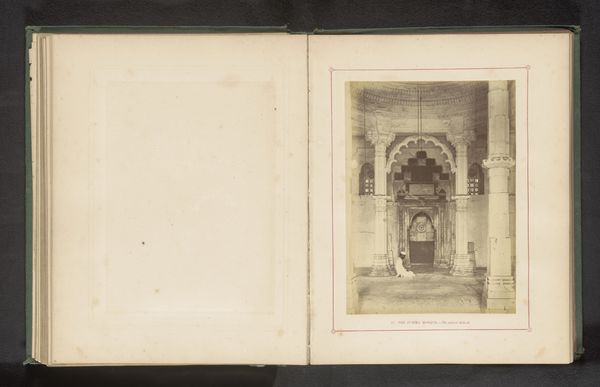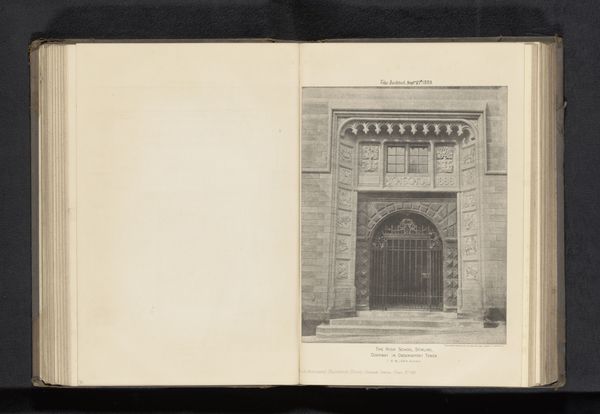
print, photography, gelatin-silver-print, architecture
# print
#
street-photography
#
photography
#
gelatin-silver-print
#
architecture
Dimensions: height 121 mm, width 99 mm
Copyright: Rijks Museum: Open Domain
Curator: Here we have "Portaal van de tempel van de vrijmetselarij te Philadelphia" or "Portal of the Freemason's Temple in Philadelphia", a photograph dating back to before 1874, captured by Frederick Gutekunst. It's a gelatin-silver print. Editor: Immediately, I'm struck by this somber symmetry. The way the light kind of vanishes into the depths of that doorway… it's alluring, yet simultaneously a little… intimidating? Like, secrets live here. Curator: I agree. It's meant to project a sense of institutional authority, a bit of secrecy. Consider the context; Freemasonry in the 19th century was a powerful, sometimes controversial force, shaping social networks and political discourse. This image becomes a piece of their self-presentation. Editor: So, the architecture itself becomes a kind of symbolic language, broadcasted to the public? Curator: Precisely. The imposing arches, the meticulously carved details – they’re projecting an image of timelessness and solidity, the power of the organization itself. Gutekunst was also quite the entrepreneur who marketed images like this one and turned photography into a public cultural asset. Editor: I’m also thinking about the choice of photography. It was a relatively new medium then, right? Did that affect the public's perception, versus, say, an engraving? Curator: Absolutely. Photography held an aura of objectivity, even if constructed. The public likely viewed this as a factual representation, offering unprecedented access to this architectural marvel, further influencing the Mason's image. Editor: The tonality is amazing given the printing process used back then. One can only imagine seeing the temple as a resident or tourist. Curator: Seeing images like this reminds us that art isn't just what hangs on a wall. Editor: Yes, it's about the architecture around us. Thanks.
Comments
No comments
Be the first to comment and join the conversation on the ultimate creative platform.
